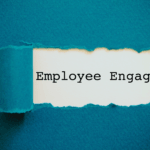How to Keep Employees Engaged in a Remote Workplace
With the Covid-19 pandemic, we walked into a new era of working conditions. Among the most significant changes that have made their way into our daily work lives is remote work. A McKinsey survey states that more than half of U.S. employees want to work from their home office for at least three days a week, even after the pandemic. One-third want to do it full-time. [2]
Microsoft’s Work Trend Index 2022 also clearly shows that remote work is here to stay. Workers priorities have shifted. Many prioritise health and personal lives over their career, and they also want more flexibility in their work schedules and locations, which has led to many employees quitting their jobs in 2020. [3]
The phenomenon of Big Quit that started in the U.S. is now being felt in Europe. In Germany, for example, the willingness to change jobs was higher than in the United States for the first time in early 2022. [12]
Thus, companies must adapt to the new working conditions and consider employees’ demands and expectations to prevent large-scale turnover. In addition, offering the opportunity of remote work plays a key role for companies positioning themselves as attractive employers in the future.
However, if team members work in different locations, the risk of poor communication and low motivation increases. Managers can also fear that they are not providing their employees with enough opportunities to get involved in the work process and are not adequately monitoring their performance. All of this affects employee engagement. [4]

Understand Employee Engagement So You Can Influence It
How is employee engagement defined and measured in your organisation? You can’t measure or change engagement if you don’t know what it looks like in your own company. Although there is no single definition in the literature, employee engagement is frequently defined as employees’ emotional and intellectual commitment to a company. Roughly summarised, it is about employees being able to identify with the organisation and the role they play in it and in feeling involved in what is going on at work. [5]
Gallup, a consulting firm that conducts an annual study on employee engagement, distinguishes three different types of engagement personas:
- Motivated employees who are highly involved in their work and show enthusiasm in what they do. They are characterised by having excellent performance and being drivers of innovation.
- Non-motivated employees who don’t feel psychologically and emotionally committed to the company. Their needs are not fully met, so they invest time but no energy in their jobs.
- Actively demotivated employees are dissatisfied with their jobs and the company they work for. Some people express their dissatisfaction openly, for example, by speaking negatively about the company or their coworkers. [6]
According to Gallup’s findings, 85% of workers worldwide are either not motivated or even actively demotivated at work. [6] So if you want to gain a competitive advantage in the war for talent, you should invest in employee engagement initiatives.
How To Ensure Employee Engagement in a Remote Work Environment
Employee engagement is not directly measurable, so it is usually necessary to consider several factors that are gathered together to define engagement. What these are, however, is not clearly specified. In literature, there are various models with different criteria for employee engagement. Transparent communication, appreciation, training opportunities, and a sense of community are all frequently mentioned elements of a high employee engagement. [4]
Some other factors emerged from the research on burnout of Maslach et al., according to which employee engagement is the positive counterpart of burnout. [7]
Since these models provide an approach to the levers that need to be pulled in order to positively influence employee engagement and motivation, we will describe them more in detail below and integrate them with concrete examples from studies and scientific papers.

1. Measure Performance in a Remote Work Environment
Remote working conditions and the lack of personal interaction make it difficult for managers to keep track of their employees’ performance. As a result, a trend of micromanaging is emerging, which makes employees feel overly controlled and with limited autonomy. On the contrary, engagement models in the literature emphasise that it is essential to give employees control over their work in order to secure commitment and staff loyalty in the long term.
Therefore, changing working conditions also call for an adapted management strategy and a new way of ensuring the performance of the workforce. Managers should urgently move away from monitoring every step of their employees’ work. Instead, employee engagement expert Anjan Pathak recommends setting goals and defining KPIs with individual team members and measuring performance against them.
He also suggests creating organisational structures that allow employees to make decisions to their own judgement. Consider, for example, working in so-called sprints. This involves planning tasks so that they can be completed within a specific time period, usually within 2 weeks. It will prevent long feedback loops and waiting for approvals. [8]
Even though an agile working structure brings many advantages, managers should ensure that their teams do not lose sight of the big picture. By breaking down work processes into smaller ones, efficiency and productivity often increase, but the overall understanding and importance of an activity or the final product can be lost. [9]
2. Offer Development Opportunities
Let’s focus on the topic of job purpose for a moment: companies should ensure that their employees can realise their individual potential in their jobs through appropriate talent management. So, give your talents the chance to develop and take on new challenges. In addition to the general company’s goals, employees also pursue personal goals. So, a win-win is to align your employees’ individual interests with the company’s objectives to ensure the commitment of your workforce and the success of your organisation.
3. Show Appreciation and Recognition
Appreciation and recognition are universal human needs, and in challenging times, the desire for appreciation increases by another 30%. [10] This makes recognition a powerful tool to increase employee motivation. However, the lack of face-to-face contact due to remote work makes it challenging to provide adequate appreciation. Thus, targeted measures are needed to recognize employees’ successes.
Instead of monetary rewards, the literature emphasises the positive influence of public praise. Therefore, do not be afraid to express appreciation publicly. By sharing outstanding achievements with the entire team or company, you show your employees that their work is appreciated even in a remote work environment. For example, use team chats to share particularly positive feedback publicly. This form of recognition also has a motivating effect on other team members.
In addition, feedback should be timely and regular. Immediate feedback has a more significant impact than feedback that occurs days or weeks after a task is completed. [8]
4. Create a Sense of Community
Community is defined in professional life as cooperative behaviour and a sense of personal connection between colleagues. If employees meet in person at work every day, this happens almost automatically through informal conversations in the coffee kitchen or over lunch. However, in a remote work environment, these opportunities fall away, which can diminish the sense of connection with the company and, subsequently, employee engagement.
Despite remote work, allow your employees to get to know other team members better. Informal meetings and events are a great way to do this. In addition to regular live events that bring all employees together in person, virtual coffee meetings and digital conversations are also good options.

5. Communication As the Key to Engagement
To effectively implement all of the recommendations mentioned so far, you need one thing above all: transparent and open communication. Regular communication between employees and supervisors and within teams is essential to ensure long-term engagement.
Engagement measures can hardly bring success without regular exchange between employees and supervisors or within teams. When it comes to the future of remote work, McKinsey recommends sharing as much information as possible with the workforce, based on the results of a survey. This is true even if the future is still unclear. In this way, companies build trust and a sense of community. [2]
However, communication should by no means be one-way. Build a well-thought-out communication strategy to encourage regular exchanges within the team. Digital check-ins, for example, are a great way to kick off online meetings with icebreaker questions or rounds of “How am I doing today?” before moving on to more technical topics. Ideally, in addition to 1:1 meetings with the supervisors, you should also give your employees a chance to regularly share ideas within the team.
Forbes magazine suggests holding daily morning meetings with the whole team, in which all members answer three questions: What did they work on yesterday? What are they working on today? And what’s holding them up? [8] Through regular exchanges, managers gain better insight into the current challenges of individual employees and can adjust the workload to the duties they’re dealing with. The frequency of such meetings should be based on the teams’ individual needs.
6. Listen and Understand the Needs of Your Employees
Especially in these times when the world of work is facing significant changes, and there is a lot of uncertainty about it, it is important to listen. Ask your employees about their concerns and worries, but also about their ideas and wishes. Remote working models and processes are by no means set in stone and should be evaluated and adapted again and again. For example, gauge the mood of your workforce through regular online surveys. [11]
Ask questions that are important to your employees’ engagement, for example:
- Do your employees feel valued enough?
- Do they find the type and frequency of communication appropriate?
- Would they recommend the company as an employer?
It is best to use an online tool for employee surveys and conduct regular surveys with different focuses. In this way, you will gain valuable insights into the issues your employees are concerned about, and you’ll know what you need to work on to ensure their commitment.

Summary
Therefore, based on the findings from various surveys and literature, these are the following recommendations and measures to adopt in order to ensure employee engagement in a remote work environment:
- Work in sprints whose success is defined by concrete goals and KPIs.
- Offer your employees the opportunity to develop and learn new skills.
- Celebrate your team’s successes and publicly express your appreciation to your employees.
- Create bonds among all colleagues by encouraging regular exchanges.
- Communicate openly and transparently in all areas.
- Listen to the needs of your employees and adapt your engagement measures accordingly.
Sources:
[1] Walker, P. (2020, 1. September). How Does Employee Engagement Affect Business Results. Holaspirit. https://www.holaspirit.com/blog/how-does-employee-engagement-affect-business-results
[2] Andrea Alexander, A., De Smet, A., Langstaff, M., Ravid, D. (2021, 01. April). What employees are saying about the future of remote work. McKinsey. https://www.mckinsey.com/business-functions/people-and-organizational-performance/our-insights/what-employees-are-saying-about-the-future-of-remote-work
[3] Great Expectations: Making Hybrid Work Work (2022, 16. März). Microsoft. https://www.microsoft.com/en-us/worklab/work-trend-index/great-expectations-making-hybrid-work-work
[4] Adisa, T., Ogbonnaya, C. and Adekoya, O. D. 2021. Remote working and employee engagement: A qualitative study of British workers during the pandemic. Information Technology and People. https:\/\/firstbird.com//doi.org/10.1108/ITP-12-2020-0850
[5] Kular, S., Gatenby, M., Rees, C., Soane, E., and Truss, K. (2008, Oktober). Employee Engagement: A Literature Review. (Working Paper) Kingston upon Thames, U.K.: Kingston Business School, Kingston University. https:\/\/firstbird.com//eprints.kingston.ac.uk/id/eprint/4192/1/19wempen.pdf
[6] Gallup (o.D.). What Is Employee Engagement and How Do You Improve It? https://www.gallup.com/workplace/285674/improve-employee-engagement-workplace.aspx
[7] Maslach, C., Schaufeli, W.B., Leiter, M. P. (2001). Job Burnout. Annual Review of Psychology, 52 (1), S. 397. 10.1146/annurev.psych.52.1.397
[8] Pathak, A. (2021, 21. Dezember). How To Engage Remote Employees In 5 Simple Steps. Forbes. https://www.forbes.com/sites/allbusiness/2021/12/27/how-to-engage-remote-employees-in-5-simple-steps/?sh=5b6cb5f76af6
[9] Ageling, W. (o.D.). Fluid Scrum Teams and the Joy of Meaningful Work. Serious Scrum. https:\/\/firstbird.com//medium.com/serious-scrum/fluid-scrum-teams-and-the-joy-of-meaningful-work-e2eb759e4c7f
[10] Baker, M. (2021, 4. Januar). 9 Tips for Managing Remote Employees. Gartner, Inc. https://www.gartner.com/smarterwithgartner/9-tips-for-managing-remote-employees
[11] Estudillo, J. (2021, 8. April). What’s Changed When it Comes to Employee Engagement Pre- COVID-19 vs. Today?. https:\/\/firstbird.com//blog.perceptyx.com/employee-engagement-drivers
[12] Weck, A. (2022, 5. April). Kündigungswelle: Wechselwille in Deutschland erstmals höher als in den USA. https:\/\/firstbird.com//t3n.de/news/kuendigungswelle-great-resignation-deutschland-usa-1464137/



















